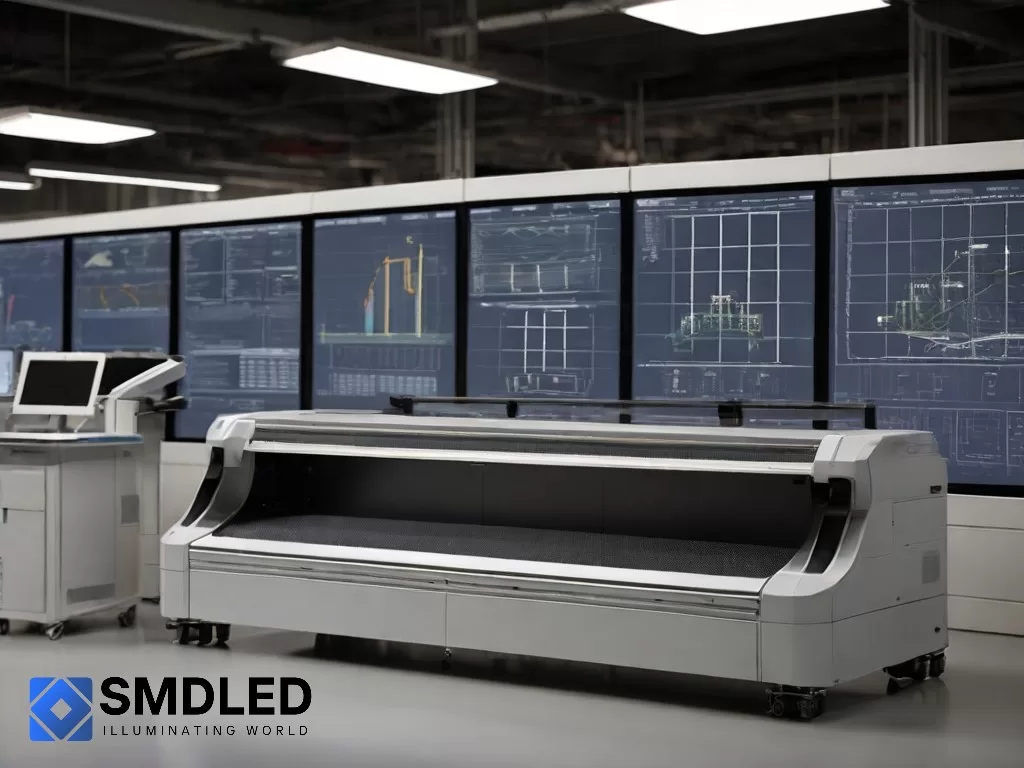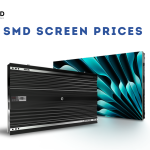SMD Screens in Industrial Settings: Applications and Benefits
In today’s rapidly evolving industrial landscape, technological advancements continue to revolutionize the way businesses operate. The introduction of Surface-Mount Device (SMD) screens has emerged as a game-changer, providing an array of applications and imparting significant benefits to various industries. Offering unmatched flexibility, reliability, and enhanced visual performance, SMD screens have become an indispensable tool in modern industrial settings. This article explores the diverse applications of SMD screens in the industry and discusses the tangible advantages they bring, ultimately shedding light on why incorporating these screens is a prudent choice for businesses striving for efficiency and success.
Table of Contents
- Industrial Applications of SMD Screens: Enhancing Efficiency and Productivity
- Benefits of SMD Screens in Industrial Settings: Improved Visibility and Flexibility
- Key Considerations for Implementing SMD Screens in Industrial Environments
- Recommendations for Maximizing the Potential of SMD Screens in Industrial Settings
- Q&A
- The Way Forward
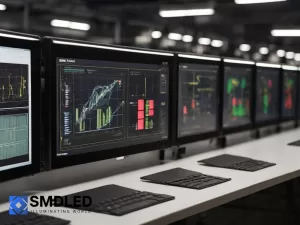
Industrial Applications of SMD Screens: Enhancing Efficiency and Productivity
SMD (Surface Mount Device) screens are revolutionizing industrial settings by enhancing efficiency and productivity. These compact, high-resolution screens offer a wide range of applications and benefits that greatly contribute to streamlining operations and driving profitability. Whether it is in manufacturing facilities, logistics centers, or control rooms, SMD screens are becoming an indispensable tool.
One of the key applications of SMD screens in industrial settings is real-time data visualization. These screens can display critical information such as production targets, supply chain metrics, or machine performance indicators in a clear and concise manner. With their high resolution and vibrant colors, SMD screens enable operators and managers to quickly assess the current status of operations, identify bottlenecks, and make informed decisions. This real-time visibility not only helps in detecting and resolving issues promptly but also improves overall production efficiency.
Another significant benefit of SMD screens in an industrial environment is their ability to support interactive communication. These screens can be equipped with touch-enabled technology, allowing operators to interact with the displayed information effortlessly. For instance, they can navigate through different production lines, drill down into detailed reports, or even control equipment directly from the screen. This interactive capability promotes collaboration, empowers employees, and fosters a culture of continuous improvement. By integrating SMD screens into industrial workflows, companies can enhance communication, reduce errors, and boost productivity.
Moreover, utilizing SMD screens in industrial settings offers several other advantages such as space-saving, energy efficiency, and durability. These screens can be easily mounted on walls, workstations, or even machinery, thus saving valuable floor space. With their low power consumption and long lifespan, SMD screens prove to be cost-effective and sustainable solutions. Additionally, their rugged design ensures resistance against moisture, dust, and vibration, making them suitable for harsh working conditions.
In conclusion, SMD screens are playing a vital role in enhancing efficiency and productivity in industrial settings. With their applications ranging from real-time data visualization to interactive communication, these screens empower operators and managers to make informed decisions, optimize workflows, and drive profitability. Embracing SMD screens can revolutionize the way industrial operations are managed, leading to increased efficiency, reduced costs, and enhanced competitiveness.
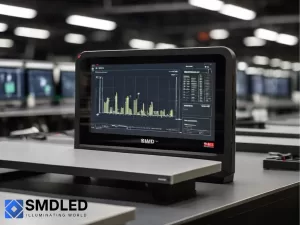
Benefits of SMD Screens in Industrial Settings: Improved Visibility and Flexibility
SMD screens, also known as surface mount device screens, have become an essential component in industrial settings due to their numerous benefits. One of the primary advantages of utilizing SMD screens in industrial environments is the improved visibility they provide. These screens are designed with high-resolution capabilities, ensuring sharp and clear images. This enhanced visibility is particularly crucial in environments where workers rely heavily on visual information, such as in control rooms or manufacturing plants. With SMD screens, operators can easily monitor processes, identify any potential issues, and make prompt decisions to maintain efficiency and safety.
Another significant benefit of SMD screens in industrial settings is their flexibility. These screens can be easily customized and tailored to meet specific requirements. They come in various sizes, enabling them to fit into any space constraint. Additionally, SMD screens offer versatility in terms of installation options – they can be mounted on walls, embedded into machines or equipment, or even used as standalone displays. This flexibility enables industrial settings to optimize their use of space and ensure that screens are positioned exactly where they are needed. Moreover, SMD screens can be integrated with other technology systems, such as data monitoring software or communication tools, further increasing their utility and enhancing overall operational efficiency.
To summarize, SMD screens provide improved visibility and flexibility in industrial settings. With their high-resolution capabilities, they allow for clear and precise monitoring of processes, helping operators make informed decisions quickly. Their flexibility in size and installation options ensures that screens can be seamlessly integrated into any workspace, optimizing both functionality and space utilization. Industrial environments that leverage the benefits of SMD screens can expect improved efficiency, increased productivity, and enhanced overall performance.
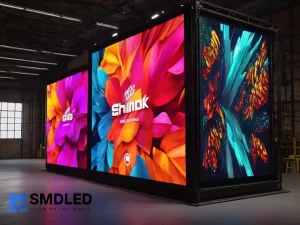
Key Considerations for Implementing SMD Screens in Industrial Environments
Implementing SMD screens in industrial environments can greatly enhance productivity and efficiency. However, there are several key considerations that need to be taken into account to ensure successful implementation. Here, we explore some of these considerations and highlight the applications and benefits of using SMD screens in industrial settings.
Durability and Robustness
1. Durability and Robustness
One of the most important factors to consider when implementing SMD screens in industrial environments is their durability and robustness. Industrial settings can be prone to harsh conditions, such as extreme temperatures, vibrations, and exposure to dust and moisture. Therefore, it is crucial to choose SMD screens that are specifically designed to withstand these challenging conditions. Look for screens that are rugged, dust and water-resistant, and have a high level of shock resistance to ensure reliable performance even in demanding industrial environments.
2. Visibility and Readability
Another key consideration is the visibility and readability of the SMD screens. In industrial settings, screens are often used to display critical operational data and real-time information. It is essential that the screens have high brightness and contrast levels to ensure clear visibility even in brightly lit conditions. Additionally, consider the viewing angles of the screens to ensure that the information can be easily read from various positions in the workspace. Opting for SMD screens with anti-glare coatings can also help to minimize reflections and improve readability in environments with strong lighting.
In Conclusion
Implementing SMD screens in industrial environments can revolutionize the way information is displayed and accessed, leading to improved efficiency and decision making. By carefully considering factors such as durability, robustness, visibility, and readability, businesses can select the right SMD screens that can withstand the rigors of industrial settings while delivering clear and accurate information to support various applications across industries.
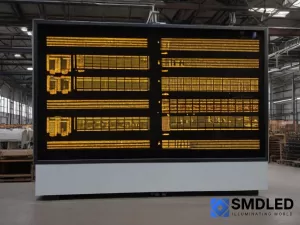
Recommendations for Maximizing the Potential of SMD Screens in Industrial Settings
SMD screens, also known as Surface Mount Device screens, have become increasingly popular in industrial settings due to their versatility and numerous applications. These advanced display screens offer several benefits that can greatly enhance productivity and efficiency in different industries. By following a few recommendations, you can maximize the potential of SMD screens in your industrial setting and unlock their full capabilities.
One key recommendation is to ensure proper installation and positioning of the SMD screens. These screens are designed to provide optimal visibility and functionality when positioned at the right angle and height. Consider the viewing distance and angle that will be most suitable for the workers in your industrial setting. Additionally, make sure the screens are securely mounted to prevent any accidents or damage. Remember that the positioning of SMD screens will vary depending on the specific requirements of your industry, so it’s vital to assess the needs of your workplace before finalizing their placement.
Another important recommendation for maximizing the potential of SMD screens in industrial settings is to utilize their interactive features. These screens can be equipped with touch capabilities, allowing workers to interact directly with the display. This feature can greatly improve user experience and efficiency, especially in tasks that require data input or control operations. Consider incorporating interactive elements into your industrial processes, such as touch-based controls or gesture recognition, to take full advantage of the SMD screen’s potential. With the proper integration of these interactive features into your workflow, you can streamline operations, reduce errors, and enhance overall productivity.
Q&A About SMD Screens in Industrial Settings
Q: What are SMD screens and their applications in industrial settings?
A: SMD screens, or surface mount device screens, are electronic displays used in industrial settings for various purposes such as monitoring, control, and data visualization. They are highly versatile and can be integrated into different machinery and systems.
Q: What are the benefits of using SMD screens in industrial settings?
A: SMD screens offer several benefits in industrial settings. Firstly, they provide real-time information display, enabling operators to monitor processes and make informed decisions. Secondly, they are durable and designed to withstand harsh environmental conditions, making them suitable for industrial environments. Lastly, SMD screens can be easily customized and programmed to meet specific industrial requirements.
Q: How do SMD screens enhance operational efficiency in industrial settings?
A: By providing real-time information and data visualization, SMD screens enable operators to monitor processes more effectively. This allows for quicker identification of issues and implementation of necessary adjustments, leading to improved operational efficiency. Additionally, SMD screens can be used for process automation, reducing human intervention and enabling smoother operations.
Q: Can SMD screens be integrated with existing industrial systems?
A: Yes, SMD screens are designed to be easily integrated with existing industrial systems. They can be connected to various data sources and control systems, allowing for seamless integration with the existing infrastructure. This makes it convenient for industrial facilities to adopt SMD screens without major changes to their existing setup.
Q: Are there any limitations or challenges associated with using SMD screens in industrial settings?
A: While SMD screens offer numerous benefits, there are a few limitations and challenges to consider. Firstly, they may require regular maintenance and calibration to ensure accurate readings and optimal performance. Additionally, extreme temperature variations or excessive vibrations may affect the durability and functionality of SMD screens. Lastly, cost can be a consideration, as SMD screens may be more expensive upfront compared to traditional display systems.
Q: How can SMD screens contribute to safety in industrial settings?
A: SMD screens play a crucial role in enhancing safety in industrial settings. Through real-time data display, operators can monitor critical parameters related to safety, such as temperature, pressure, or gas leaks. By presenting this information visually, potential hazards or deviations can be detected and addressed promptly, helping to prevent accidents and ensure overall safety in the operation.
Q: What industries can benefit from incorporating SMD screens into their operations?
A: SMD screens can be beneficial across various industries in industrial settings. Some examples include manufacturing, oil and gas, energy production, transportation, logistics, and pharmaceutical industries. Any industry that requires real-time monitoring, control, and data visualization can benefit from the use of SMD screens.
Q: What are the future prospects for SMD screens in industrial settings?
A: The future prospects for SMD screens in industrial settings are promising. As technology advances, the capabilities of SMD screens are expected to improve, offering higher resolution, better durability, and increased integration capabilities. With the growing demand for automation and data-driven decision-making, SMD screens are likely to become even more prevalent in industrial settings, contributing to enhanced efficiency and productivity.
The Way Forward To SMD Screens in Industrial Settings
In conclusion, SMD screens have revolutionized industrial settings, offering a range of applications and benefits that enhance productivity, efficiency, and safety. These sophisticated displays provide remarkable versatility, with their ability to seamlessly integrate into various industrial environments, adapt to different lighting conditions, and withstand challenging operating conditions.
From process monitoring and control rooms to assembly lines and manufacturing plants, SMD screens have proven to be invaluable tools. Their high-resolution displays, impeccable color accuracy, and wide viewing angles ensure that critical information is presented with utmost clarity and precision. Whether it’s monitoring real-time data, visualizing complex processes, or analyzing intricate schematics, SMD screens offer unparalleled visibility, enabling operators and technicians to make informed decisions swiftly.
The rugged nature of SMD screens allows them to thrive in harsh industrial environments. With robust build quality and resistance to vibrations, dust, and temperature fluctuations, these screens remain durable and reliable even amidst the most demanding conditions. Additionally, their efficient power consumption and low heat generation contribute to prolonged lifespan and reduced operational costs, making them a sustainable and cost-effective choice for industrial applications.
Furthermore, the seamless integration of SMD screens with existing industrial systems, through various connectivity options, offers added convenience and compatibility. Whether it’s connecting to PLC systems, SCADA interfaces, or IoT networks, these displays provide seamless data exchange, enabling real-time monitoring, control, and automation. This integration not only streamlines operations but also enhances overall efficiency and accuracy, driving productivity gains and ensuring optimal performance.
In conclusion, SMD screens are revolutionizing industrial settings by providing valuable applications and benefits that elevate operational efficiency, enhance safety, and deliver superior visual experiences. With their versatility, durability, and seamless integration capabilities, these displays are poised to shape the future of industrial environments, empowering businesses to thrive in an increasingly competitive landscape. As industries continue to evolve and adapt to emerging technologies, SMD screens are set to play a pivotal role in ensuring optimal productivity and success in the industrial sector.
SMD Screens in Industrial Settings: Applications and Benefits
Contact Us For Free Consultation at 0306-1333384
Powered By BIACommunication


